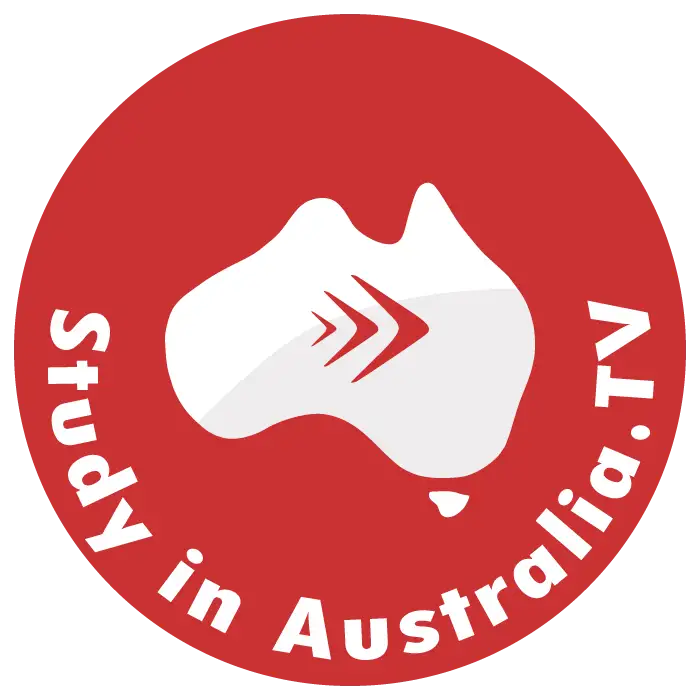The Journey to Becoming a Pilot in Australia: An In-Depth Guide
Introduction
In recent years, the aviation industry in Australia has seen a significant uptick in demand for qualified commercial pilots. This surge is paralleled by an array of comprehensive aviation courses offered across the country, aimed at equipping the next generation of pilots with the necessary skills and knowledge. Among these, several courses listed on mycoursefinder.com stand out for their depth and breadth. Let's dive into what it takes to become a pilot in Australia and explore some of these notable courses.
The Path to the Skies: Key Steps and Costs
Becoming a pilot in Australia involves several stages, each requiring specific training and licenses:
-
Recreational Pilot Licence (RPL):
- Description: The RPL is the entry-level pilot license in Australia. It's designed for those who wish to fly for recreation rather than as a profession.
- Training Requirements: To obtain an RPL, a minimum of 25 flight hours is required, including at least 20 hours of flight instruction and 5 hours of solo flight.
- Privileges: With an RPL, pilots can fly light, single-engine aircraft during the day in good weather conditions. The flight is generally restricted to the local area of the training aerodrome.
- Limitations: RPL holders cannot carry more than one passenger and are limited to flying aircraft with a maximum takeoff weight of 1,500 kg.
-
Private Pilot Licence (PPL):
- Description: The PPL is a step up from the RPL and is for those who fly for personal and recreational purposes but want more freedom than the RPL offers.
- Training Requirements: To get a PPL, pilots need a minimum of 40 flight hours, which includes cross-country flight training and flying at different aerodromes.
- Privileges: PPL holders can fly anywhere in Australia and carry multiple passengers. They can also fly at night if they hold a night VFR rating.
- Limitations: Despite the increased freedom, PPL holders cannot fly for commercial purposes or receive payment for flying.
-
Commercial Pilot Licence (CPL):
- Description: The CPL is for those who aim to make a career in aviation. It allows pilots to operate aircraft for hire or reward.
- Training Requirements: A minimum of 150 flight hours is required, including training in advanced navigation, aerodynamics, and more complex aircraft systems.
- Privileges: CPL holders can work in various roles like charter, agricultural operations, flight instruction, and more. They can also progress towards an ATPL.
- Limitations: While CPL holders can be paid for flying, they cannot operate in some higher-risk commercial operations without further endorsements or ratings.
-
Air Transport Pilot Licence (ATPL):
- Description: The ATPL is the highest level of aircraft pilot license. It's required for pilots who wish to command aircraft in commercial air transport.
- Training Requirements: To achieve an ATPL, pilots must have a minimum of 1,500 flight hours, including varied experiences like cross-country, night flying, and instrument flying.
- Privileges: ATPL holders can serve as Pilot-in-Command (Captain) on scheduled commercial airlines, carrying passengers or cargo.
- Limitations: Achieving an ATPL requires significant experience and knowledge, as the training and exams are rigorous and comprehensive.
Each of these licenses represents a step in a pilot's career path, with each level offering greater privileges and opportunities, as well as requiring more training, experience, and responsibility.
The journey begins with basic training for an RPL and progresses through to the ATPL, which is required for flying large passenger aircraft.
Expanding on the cost implications of each pilot license in Australia provides a clearer understanding of the financial commitment required at each stage of a pilot's training journey.
-
Recreational Pilot Licence (RPL):
- Estimated Cost: The cost to obtain an RPL generally starts from around AU$5,000 to AU$10,000. This cost varies depending on the flight school and location.
- Components of Cost: Includes flight training hours, instructor fees, aircraft rental, ground school, and examination fees.
- Additional Costs: May include pilot supplies like headsets, charts, and study materials.
-
Private Pilot Licence (PPL):
- Estimated Cost: Acquiring a PPL can cost between AU$10,000 to AU$15,000. This cost may be higher based on the number of flight hours required to reach proficiency.
- Components of Cost: Covers advanced flight training, longer cross-country flights, night flying (if included), ground instruction, and examination fees.
- Additional Costs: Pilot gear, medical examination fees, and insurance.
-
Commercial Pilot Licence (CPL):
- Estimated Cost: The CPL is a significant investment, often ranging from AU$40,000 to over AU$70,000, depending on the training institute and the chosen program.
- Components of Cost: Includes extensive flight training (150 hours minimum), theory classes, advanced endorsements, and examination fees.
- Additional Costs: May also include costs for instrument ratings, multi-engine endorsements, and additional hours if required.
-
Air Transport Pilot Licence (ATPL):
- Estimated Cost: The path to an ATPL is the most expensive, potentially costing over AU$100,000. This cost accrues over time as pilots build up the 1,500 hours of flight experience required.
- Components of Cost: Includes advanced training modules, flight simulator sessions, specific type ratings, and exam fees.
- Additional Costs: Can include recurrent training costs, renewals of medical and other certifications, and specialized training for certain types of aircraft.
Financing and Scholarships
- Loan and Financing Options: Many flight schools offer loan arrangements or payment plans. Some banks and financial institutions also provide educational loans for pilot training.
- Scholarships and Grants: Various aviation organizations and some flight schools offer scholarships that can partially cover the cost of pilot training.
Considerations for Budgeting
- Flight Hours Beyond Minimums: It's common for students to need more hours than the minimum required for each license, which can increase the overall cost.
- Choice of Flight School: Costs can vary significantly between flight schools. Factors such as location, fleet quality, and the instructor-to-student ratio can affect pricing.
- Personal Circumstances: The ability to train full-time or part-time can also influence the total cost, as part-time training may extend the duration of the course, potentially increasing the cost.
In conclusion, pursuing a pilot's license in Australia requires careful financial planning. Prospective pilots should consider all the costs involved and explore various funding options to support their aviation journey.
Exploring Notable Courses
Several universities and aviation schools in Australia offer comprehensive programs tailored to the needs of future pilots. Here’s a look at a few courses listed on mycoursefinder.com:
-
Bachelor of Applied Science (Aviation) (022041J, 081761K, 111188D): These courses provide a solid foundation in aviation science, combining theoretical knowledge with practical skills.
-
Bachelor of Aviation (070518A, 094756M): Focused on the broader aspects of aviation, these programs cover everything from flight principles to aviation management.
-
Bachelor of Aviation (Commercial Pilot) (097033M): Tailored for those who aspire to become commercial pilots, this course includes in-depth flight training and pilot licensing preparation.
-
Bachelor of Aviation (Flight) (095900M): This specialized program is designed for those focusing primarily on the flying aspect of aviation, providing extensive practical flight training.
Financial Assistance and Career Prospects for Residents and Citizens
Financial assistance in Australia is available through programs like FEE-HELP, helping students manage the costs of their aviation education. Once qualified, pilots can expect to earn substantially. Captains in major airlines can earn between AU$250,000 to AU$450,000 annually, while entry-level positions offer competitive starting salaries.
Income Projections for Pilots in Australia and Globally
The aviation industry offers varied and lucrative career paths for pilots, both in Australia and internationally. The income for pilots can vary widely based on factors such as the type of license held, experience, type of employer, and location.
In Australia:
-
Entry-Level Pilots (Flight Instructors, Charter Pilots):
- Income Range: Approximately AU$40,000 to AU$60,000 per year. Flight instructors or pilots working for smaller charter companies typically start in this range.
-
Commercial Pilots (Mid-Level Experience):
- Income Range: From AU$60,000 to AU$100,000 per year. This includes pilots working in sectors like agricultural aviation, emergency services, and regional carriers.
-
Airline Pilots (Senior, Captains):
- Income Range: Captains in major Australian airlines can earn from AU$100,000 to AU$250,000 or more annually, depending on their experience and the airline.
Internationally:
-
Commercial and Cargo Pilots:
- Income Range: US$80,000 to US$150,000 per year. Pilots flying for international cargo carriers or commercial services outside of Australia can expect incomes in this bracket.
-
Senior Airline Pilots and Captains:
- Income Range: US$100,000 to over US$300,000 per year. Senior pilots with major international airlines can earn high salaries, especially in North America and the Middle East.
-
Corporate and Business Aviation Pilots:
- Income Range: US$70,000 to US$200,000. This sector can offer highly competitive salaries, especially for pilots flying for large corporate entities.
Additional Considerations:
- Contract and Freelance Pilots: Income can vary significantly for pilots working on a contractual or freelance basis, often depending on the nature of the assignments and frequency of work.
- Benefits and Perks: Apart from the base salary, many piloting jobs offer additional benefits such as travel allowances, health insurance, and retirement plans.
- Rising Demand: The global demand for pilots, especially in emerging markets, is likely to increase salaries and opportunities in the coming years.
Career Progression:
- Building Experience: Initially, pilots may earn less, but with accumulated flight hours and experience, their income potential increases substantially.
- Type Ratings and Specializations: Pilots with additional certifications and type ratings for specific aircraft can command higher salaries.
In summary, a career in aviation, though requiring significant investment in training, offers excellent earning potential both in Australia and globally. The diversity of roles available to pilots means that there are opportunities suitable for a wide range of interests and specialties within the field.
Conclusion
The journey to becoming a pilot in Australia is both challenging and rewarding. It requires a significant investment of time and money, but the potential returns - both financial and in terms of career satisfaction - are immense. The aviation courses offered in Australia are among the best, designed to prepare students for a successful career in this dynamic industry.
For more detailed information on these courses and to find the one that best suits your aspirations, visit mycoursefinder.com.











